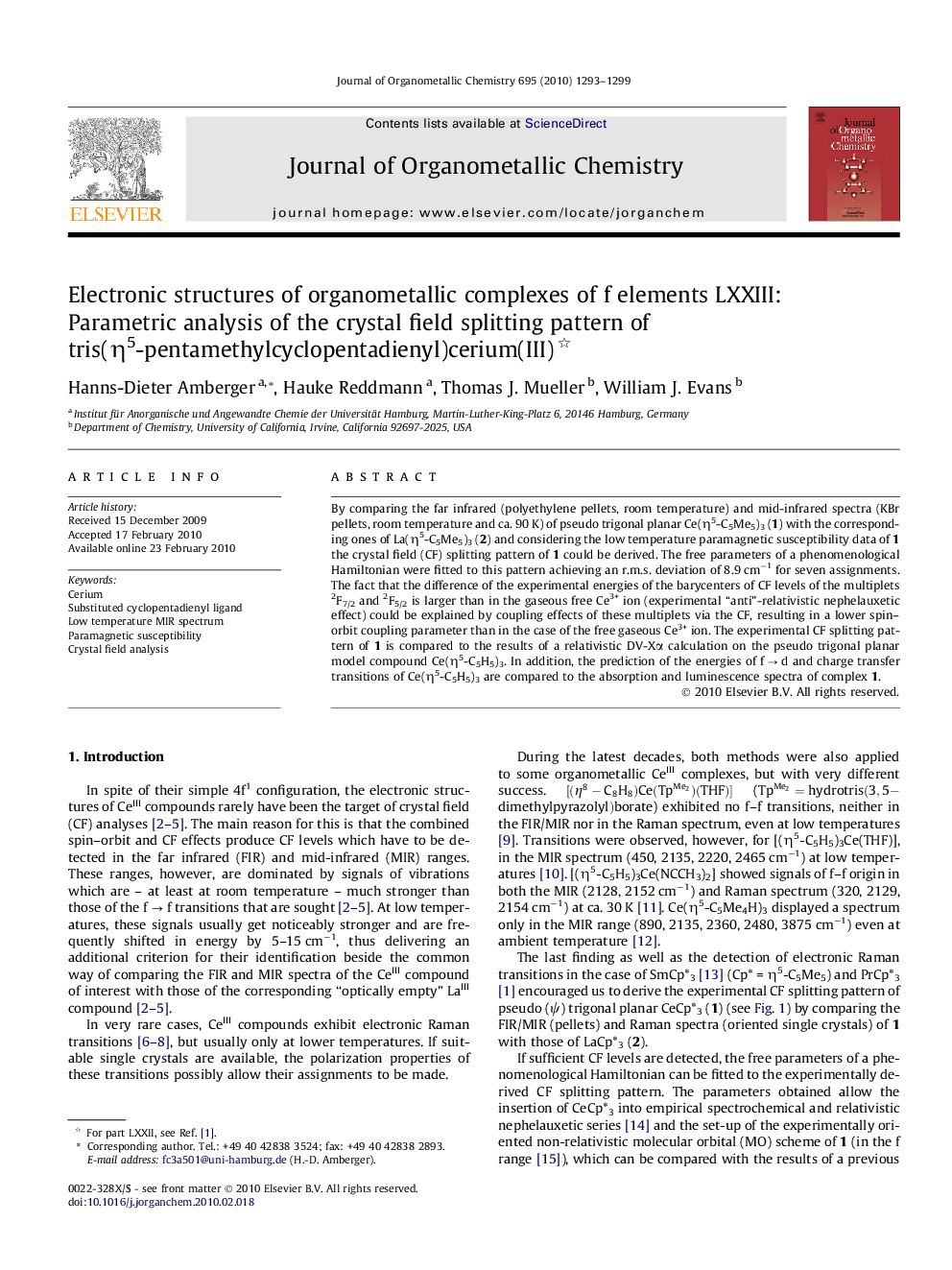| Article ID | Journal | Published Year | Pages | File Type |
|---|---|---|---|---|
| 1324187 | Journal of Organometallic Chemistry | 2010 | 7 Pages |
By comparing the far infrared (polyethylene pellets, room temperature) and mid-infrared spectra (KBr pellets, room temperature and ca. 90 K) of pseudo trigonal planar Ce(η5-C5Me5)3 (1) with the corresponding ones of La(η5-C5Me5)3 (2) and considering the low temperature paramagnetic susceptibility data of 1 the crystal field (CF) splitting pattern of 1 could be derived. The free parameters of a phenomenological Hamiltonian were fitted to this pattern achieving an r.m.s. deviation of 8.9 cm−1 for seven assignments. The fact that the difference of the experimental energies of the barycenters of CF levels of the multiplets 2F7/2 and 2F5/2 is larger than in the gaseous free Ce3+ ion (experimental “anti”-relativistic nephelauxetic effect) could be explained by coupling effects of these multiplets via the CF, resulting in a lower spin–orbit coupling parameter than in the case of the free gaseous Ce3+ ion. The experimental CF splitting pattern of 1 is compared to the results of a relativistic DV-Xα calculation on the pseudo trigonal planar model compound Ce(η5-C5H5)3. In addition, the prediction of the energies of f → d and charge transfer transitions of Ce(η5-C5H5)3 are compared to the absorption and luminescence spectra of complex 1.
Graphical abstractBy comparing the low temperature mid-infrared spectra of Ce(η5-C5Me5)3 with those of La(η5-C5Me5)3, the underlying crystal field splitting pattern could be derived, and simulated by fitting the free parameters of a phenomenological Hamiltonian.Figure optionsDownload full-size imageDownload as PowerPoint slide
